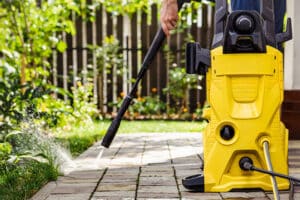Pressure Washing vs. Traditional Cleaning Methods: A Comparison
Introduction
Cleaning the exterior of a home or building is a task that often presents a choice: pressure washing or traditional cleaning methods. While both aim to achieve a clean, appealing exterior, they differ significantly in their approach, efficiency, and outcomes. This blog post delves into the differences between pressure washing and traditional cleaning methods, helping you understand which is the best choice for your cleaning needs.
What is Pressure Washing?
Pressure washing, also known as power washing, uses high-pressure water spray to remove dirt, grime, mold, and other debris from surfaces. This method is highly effective for cleaning sidewalks, driveways, decks, siding, and other exterior surfaces.
Benefits of Pressure Washing
- Efficiency: Pressure washing cleans surfaces more quickly and thoroughly than manual scrubbing.
- Deep Cleaning: It can reach into nooks and crannies, removing embedded dirt that traditional methods can’t.
- Less Labor Intensive: Requires less physical effort compared to scrubbing by hand.
- Versatility: Suitable for a wide range of surfaces, including concrete, brick, wood, and vinyl.
Traditional Cleaning Methods
Traditional cleaning involves manual scrubbing with brushes, water, and cleaning solutions. This method is commonly used for indoor and outdoor cleaning tasks.
Benefits of Traditional Cleaning
- Control: More control over the cleaning process, which can be important for delicate surfaces.
- Accessibility: Easier to access without needing specialized equipment.
- Cost: Generally less expensive in terms of equipment and resource requirements.
- Environmental Impact: Often uses less water and can be more eco-friendly, depending on the cleaning products used.
Comparison of Methods
1. Effectiveness
- Pressure Washing: More effective for removing tough stains, mold, and grime, especially from hard surfaces.
- Traditional Cleaning: Better for delicate surfaces where high pressure might cause damage.
2. Time and Labor
- Pressure Washing: Significantly reduces cleaning time and physical effort.
- Traditional Cleaning: More time-consuming and labor-intensive, requiring hands-on scrubbing.
3. Cost
- Pressure Washing: Higher initial cost due to the need for specialized equipment or hiring a professional service.
- Traditional Cleaning: Lower cost, using basic cleaning tools and solutions.
4. Environmental Impact
- Pressure Washing: Can use a large amount of water; however, eco-friendly options are available.
- Traditional Cleaning: Typically uses less water, but the environmental friendliness depends on the cleaning agents used.
5. Safety and Damage Risks
- Pressure Washing: If not done correctly, it can damage surfaces like wood or siding.
- Traditional Cleaning: Lower risk of damage, but requires more caution with chemical cleaners.
6. Versatility
- Pressure Washing: Highly effective for a wide range of outdoor surfaces.
- Traditional Cleaning: More suited for indoor cleaning and delicate outdoor areas.
Conclusion
Both pressure washing and traditional cleaning methods have their places in maintenance routines. The choice depends on several factors, including the type of surface being cleaned, the level of dirt or grime, environmental considerations, and the available time and resources.
For tough outdoor stains and large areas, pressure washing stands out as the more efficient and effective option. However, for delicate surfaces or smaller indoor cleaning tasks, traditional methods may be preferable. In some cases, a combination of both methods can provide the best results, using pressure washing for the heavy lifting and traditional methods for fine-tuning and detail work.
In summary, understanding the strengths and limitations of each method will help you make an informed decision to keep your property clean, safe, and well-maintained. Whether you choose pressure washing, traditional cleaning, or a mix of both, the key is to approach your cleaning tasks with the right tools and methods for the job at hand.
